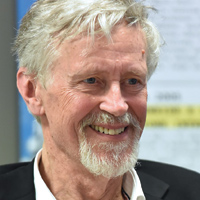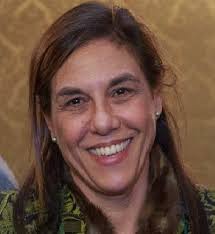

Media Duemila
Among daily news about innovations in our non-stop collective creativity, two ground- breaking engineering concepts herald the new digital transformation.
The first is called Symbiotic Autonomous Systems (SAS), a general category as well as a new evolutionary drive that brings together rapid advances in AI and Machine Learning applied to the worldwide accumulation of Big Data on everything. It will be the result of the concurrent evolution of machine augmentation and human augmentation converging on a symbiosis, that is, an intimate interpenetration between humans and machines or programs, a physical and mental co-existence in cyberspace. These engineering innovations will affect our bodies, our minds and the whole environment. Intelligent prosthetics, sophisticated robotics, decision-making algorithms, affective and sensitive digital assistants, and intelligent environments, well beyond today’s idea of smart city, all this points to the formation of an entirely new way to occupy space and time. 1
According to J.P. Morgan’s top AI expert, Manuela Veloso:
Systems already communicate wirelessly, drawing on data in the cloud, or [are] helped by remote teams. You can think of AI systems in constant symbiosis with everything else, with other information on the web, with other AI systems, with humans next to them, with remote humans. It becomes not a problem of developing self-contained AI systems, but an AI system that can recognize when it does not know, or when it needs more information, or when it thinks something with some probability but it’s not sure. It’s not that it can solve all the problems up front, but it can rely on all these other sources around. 2
Included among the considerations about SAS is the other life-changing innovation – the concept of a “Digital Twin”. It was conceived a few decades ago as an engineering instrument that would augment machines with a digital double to monitor complex and expensive motors, turbines, and also robots. A machine’s Digital Twin includes not only real-time reporting as it functions, but also the history of its maintenance, perhaps the occasional break- downs and, more importantly the source and coordinates of all parts suppliers and records of delivery and ef ciency. In many cases, the digital twin enables automatic repairs just as it regulates normal functions. The twinning concept is of interest not only to engineers, but also to town planners, military strategists, security systems operators, educators, trainers and a host of other complex operations managers. Planning is on course to extend and apply the concept to businesses, cities, regions and, why not, to whole countries. The concept of the Digital Twin made it to the top of Gartner’s hype cycle in 2018 and is still avour of the month3 because it is also destined to be applied to you and me. How come?
The idea of twinning you and me online crowns thirty years of sketchy development that started in 1987 with Apple’s purely conceptual “Knowledge Navigator” and matured over that time until today it is represented in Apple’s Siri, Microsoft’s Cortana, Samsung’s Bixby, Google’s Assistant, and particularly Amazon’s Alexa. Alexa is by far the most sophisticated one, in part because it integrates machine learning to learn about you as it manages, responds, sorts and stores your queries. All these are great tools to help us in our daily lives, and the ambition of these companies and others is to make them your companions for life.
The Digital Twin, however, is much more ambitious than a digital companion. It aims to capture and represent you in every way and at all times – past, present and even future – as it will be able to predict or propose moves on the basis of what it (he? she?) knows about you.
“IF KINDLE WAS TO BE UPGRADED WITH FACE RECOGNITION SOFTWARE AND BIOMETRIC SENSORS, IT WOULD KNOW HOW
EACH SENTENCE INFLUENCED YOUR HEART RATE AND BLOOD PRESSURE. IT WOULD KNOW WHAT MADE YOU LAUGH, WHAT MADE YOU SAD, WHAT MADE YOU ANGRY. SOON, BOOKS WILL READ YOU WHILE YOU ARE READING THEM.” –YUVAL NOAH HARARI
The truth is, we already have digital twins because we keep accumulating tons of data about ourselves, some deliberately on Facebook, Twitter and LinkedIn, for example, and others not quite so consciously in every move we take. Even mind-reading is now possible. Eventually, as we read our novels on Kindle or Kobo, even our thoughts and our feelings will become data that will be grist to the mill for our digital twin.
The problem however is that we do not have just one, but myriad little twins scattered in the world’s databases. Most of these micro profiles. tailored by government and institutions such as PRISM or Google, are fragmented by the uses they are intended for. The government doesn’t need to know about your diet generally, but only if you represent a threat to the community or if you are not paying your taxes. Google wants to know what you read and builds your profile based on your search pattern and also on the kind of company you keep, since it insists that your Gmail activities be coordinated with the other services the mammoth search engine gives you. In fact, since we generally do not know how, or how much or in what way these micro-profiles are constructed and used, I have grouped the lot of them under the general banner of the “digital unconscious”, everything that is known about that you don’t know and that has more effect on your choices and motivations than whatever Freud told you about your mom and dad.
So what can your DT do for you? Markus Steer, advisor with SAP, writing for Digitalist Magazine puts the emphasis on medical health as well as the workplace: The representation of an individual person, including personal data like weight, health data, activity tracking data, and medical treatment data can help to establish predictive alerts and guide people to healthier lifestyles. It will give better insights and transparency on the individual’s health situation by offering more data points. Data shared with doctors will help de ne better preventive strategies and recovery plans and shrink health care costs………In the business world, employee training plays an important role in time to market. Workers can be trained in the digital world rst, leading to tremendous resource optimization for on-site training. 4
There is a lot more to speculate about digital twins, as it will become everyone’s interface to navigate and negotiate in our relationships with the Internet and the whole digital universe. It will have access to current and integrated information about anything and everything. But there is one urgent question about our twin that brings us back to SAS. In fact, how autonomous will it actually be?
Indeed, one major issue about the rapid development of ever more sophisticated technologies is that they are becoming autonomous. In fact, the more autonomy we yield to our machines, the less we can keep for ourselves. The IEEE research team, which is working on the implications of SAS, identi ed many legal and security, as well as ethical issues emerging from the rapid development of new generation expert systems. SAS are already replacing human skills in labor and professional competence in law, medicine, business and arbitration. So where does that leave us humans in the future digital culture? It is ultimately up to human beings to determine. 5
Derrick de Kerckhove is former Director of the McLuhan Program in Culture & Technology at the University of Toronto, where he is professor emeritus at the Department of French. He subsequently joined the Faculty of Sociology of the University Federico II in Naples from 2004 to 2014. Presently, scienti c director of the Rome based monthly Media Duemila, and of the Osservatorio TuttiMedia. he is author of more than a dozen books translated in over ten languages. A Visiting Professor at the Polytechnic Institute of Milan, he is also Research Director at the Interdisciplinary Internet Institute (IN3) at l’Universitat Oberta de Catalunya in Barcelona. His fields of research include Technopsychology, Psychotechnology, Neuro-cultural research, Art and communication technologies, Media Theory, Collaborative Educative Software, and Connected Intelligence.
Maria Pia Rossignaud is Editor in Chief of the digital culture magazine Media Duemila. She is also Vice President of the Observatory TuttiMedia, a cultural association created in 1996, where companies in various sectors (publishing, advertising, television, telecommunications) sit together to imagine the future and propose useful solutions to all with respect to the problems related to the advent of new media. She has been coordinator of Digital Lab Training Coordinator @ eg, and is a former professor of Sapienza University and LUISS. She organizes meetings and conferences on subjects of current importance. The most recent: “Public Mind: construction of public opinion in the era of the algorithm (September 24th, Frederick II Naples); “Program the world”. (September 28 Prix Italia Milan); “Is there a past in our future? Information between Liberty / Rules / Post Truth and Lies “. (9 March FNSI Rome).
- To contribute sociological insights to the topic, I was invited on an IEEE six person team to examine social, cultural and ethical issues attending SAS. Two White Papers (2017 and 20018) are now availa- ble on line (https://symbiotic-autonomous-systems. ieee.org/images/ les/pdf/sas-white-paper- nal- nov12-2017.pdf AND https://symbiotic-autono- mous-systems.ieee.org/white-paper/white-paper-ii )
- https://www.theverge.com/a/verge-2021/human- ity-and-ai-will-be-inseparable
- https://www.gartner.com/smarterwithgartner/ how-digital-twins-simplify-the-iot/
- Markus Steer (https://www.digitalistmag. com/iot/2018/05/23/will-there-be-digital- twin-for-everything-everyone-06169041)
- See the Digital Twin Manifesto developed by a student at Politecnico di Milano http://www. digitaltwinmanifesto.space/ les/full_mani- festo.pdf



